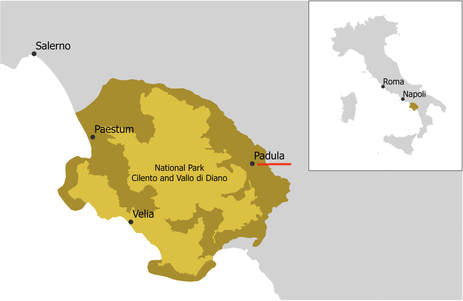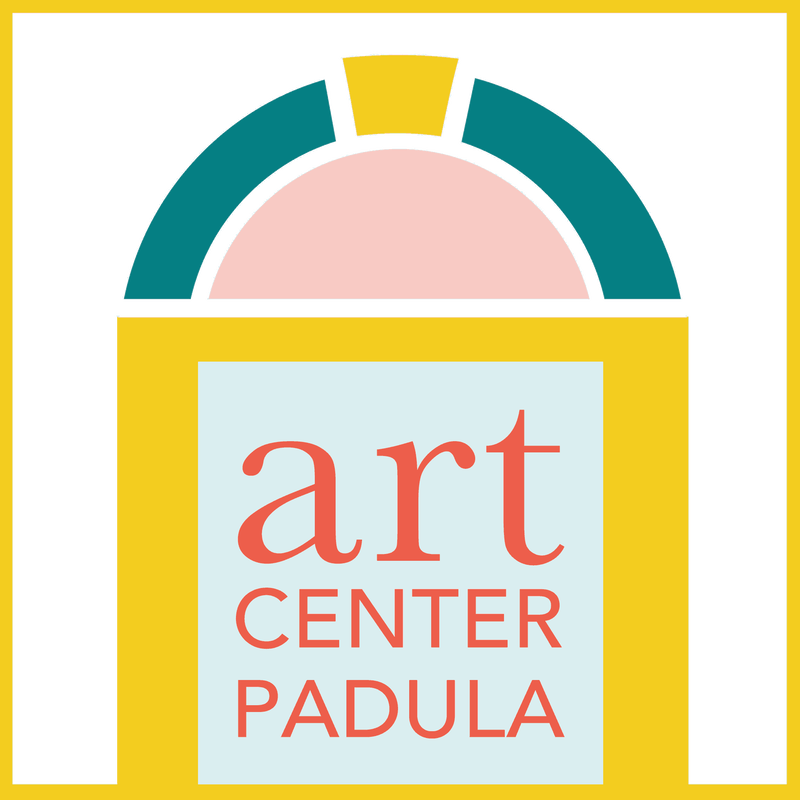Padula: an Intoduction
|
Padula is inside the Parco Nazionale del Cilento, Vallo di Diano e Alburni, the second largest park in Italy, located within the confines of the province of Salerno, region of Campania. It is home to the magnificent Certosa di San Lorenzo, a Carthusian monastery founded in 1306 that boasts the largest cloister in the world. Above the hilltop village of Padula lies the remnants of the ancient roman settlement, Cosilinum or Civitas.
The region around Padula is in many ways a world apart from the perhaps better-known landscapes of Tuscany or other regions in the north. Lacking the kind of infrastructure that makes those places easily accessible and more open to the rest of the world, this area of Southern Italy remains somewhat isolated; foreign tourists are still quite rare. Most people here do not speak English. In fact, many don't even speak much Italian, but use rather the local dialect: a set of languages that change from town to town. |
Padula, along with most of the villages that dot the hilltops around it, has been losing its population at an alarming rate in the past 25 years, due almost entirely to the flight of the younger generations to larger towns and cities. While the economic challenges that this region currently faces are complex, the richness of the history, culture and natural beauty is astounding.
The earliest evidence of human occupation (primitive man) in this region dates from 500,000 BC. It has been successively inhabited over time during the Neolithic period, during the Bronze and Iron Ages, by the Etruscans, Greek colonists and Lucanians. It was incorporated into the Roman territory in the 3rd century BC. The fall of Rome was followed by a long period of Barbarian domination by various factions including the Visigoths, Longobards and Saracens, until the Normans conquered the region in 1076, after which several hundred years of feudal strife ensued. During the Risorgimento or Unification period between 1815 and 1871, which ultimately united Italy into one nation, this under-represented and impoverished region was overrun by brigands, rebels and secret societies, giving birth to some of the best-loved legends of the area.
The earliest evidence of human occupation (primitive man) in this region dates from 500,000 BC. It has been successively inhabited over time during the Neolithic period, during the Bronze and Iron Ages, by the Etruscans, Greek colonists and Lucanians. It was incorporated into the Roman territory in the 3rd century BC. The fall of Rome was followed by a long period of Barbarian domination by various factions including the Visigoths, Longobards and Saracens, until the Normans conquered the region in 1076, after which several hundred years of feudal strife ensued. During the Risorgimento or Unification period between 1815 and 1871, which ultimately united Italy into one nation, this under-represented and impoverished region was overrun by brigands, rebels and secret societies, giving birth to some of the best-loved legends of the area.
Exploring Padula
Besides walking through the countryside, or wandering the maze of streets in the historic center, you may also want to explore a little farther and wider:
- The Certosa di San Lorenzo is the largest monastery in Southern Italy as well as one of the most interesting in Europe for its architectural magnificence and abundance of artistic treasures.
https://www.beniculturali.it/luogo/certosa-di-san-lorenzo - The Archeological Museum of the Lucania is housed inside the Certosa di San Lorenzo and has a wonderful collection of artifacts from local excavations.
- The Battistero di San Giovanni in Fonte, below the village of Padula, is a paleochristian baptism pool constructed on the ruins of a temple to a pagan water nymph.
https://fondoambiente.it/luoghi/il-battistero-paleocristiano-di-san-giovanni-in-fonte?ldc - The ruins of the ancient roman city of Cosilinum is a 4-hour round trip hike from our residency center at Casa Padula on an unpaved country road through the woods. The trail leads on to the San Sepulcro church which offers breathtaking views over the valley.
http://www.novacivitas.info/parco-archeologico-di-cosilinum.html - The Eremo di San Michele can be added to the above hike or done separately and is a cave with a long history of religious use, from pre-Christianity onwards. The frescos on the walls date from the 1600s.
https://www.sanmicheleallegrottelle.it/ - The monastery of San Francesco di Assisi was constructed beginning in the 14th century. The spectacular frescos in the church date from 1715, though some earlier works are still visible. The cloister and gardens are a delight.
www.sanfrancescopadula.it/ - And any number of walks/hikes in the countryside and mountains around town: Casacata di Frud, Monte Romito, the paleo-christian baptism pool at San Giovanni in Fonte, the monastery of Saint Francis, the valley of the mills.... let us know how much (or little) of an adventure you'd like to go on and we can give you more information.
A photo montage by our friends at Padula in Tour:
Video credit: padulafoto.it
Other useful links:
- Padula in Foto
Photos of all the neighborhoods, churches and historical sites in Padula, plus maps, information and guides. Curated by photographer Domenico Trezza, a Padula native with a passion for his hometown.
- Padula Sacra
In-depth information on the sacred sites located in Padula, a walking itinerary, plus an on-line reservation portal to schedule a visit to any of the sites. Curated by Don Giuseppe Radesca, Padula's parish priest and vicar general for the diocese Teggiano-Policastro.



